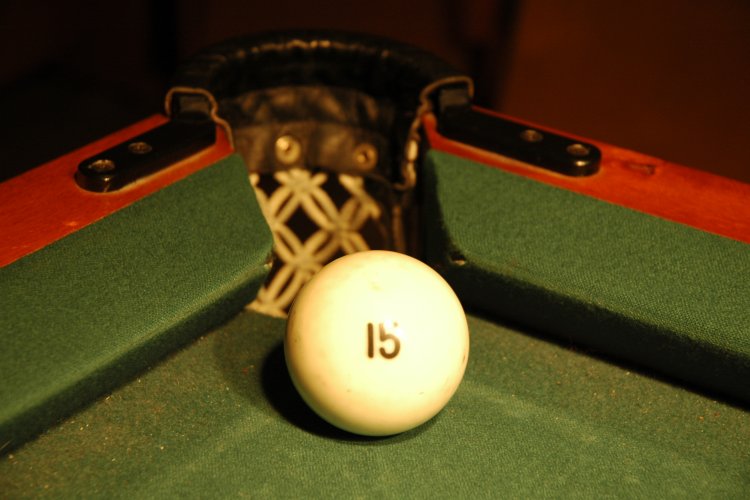Slh:
I like the fact that you actually reviewed the video of a player that's a known NAME in both Russian Pyramid as well as pool. Here in the Northeast US, we hold Evgeny Stalev's name in high regard. We'd love to see him back! (Evgeny, if you're reading this, "come back"!)
As you might know, Brighton Beach in Brooklyn, NY is known as "Little Russia." I've played Pyramid there and I'm also a known snooker player in these parts. I can tell the readership the following things, from personal experience:
1. While *pocketing* a ball in Russian Pyramid might seem more difficult than snooker (because as the OP noted, the tighter pocket clearance tolerances than snooker), the architecture of the pockets allows a bit of "cheating." That is, if you look at even a moderately used Pyramid table, you'll see this:
** Notice the "horns" of the pocket have been "burned-off" **
That's from the "cheating" aspect I was referring to earlier. Whereas you can "cheat" a pool table's pockets by merely aiming away from the center of the pocket (even using the adjoining rail, in some cases), in Russian Pyramid, you "cheat" the pocket by HITTING IT HARD. The purpose is to "bend" the horn/knuckle of the pocket out of the way. It's roughly analogous to that well-known 8-ball shot, where the 8-ball is resting on the horn/knuckle of the side pocket, so you slam the 8-ball *through* the horn and pocket it.
2. A key technique of Russian Pyramid is as some knuckleheads point out, the "intentional scratching" by caroming the shooter's chosen cue ball off of the object ball into the pocket. The knuckleheads might think this is "easy," but it's not. You have to have mastered the 30-degree, 90-degree, and ghostball rules to accurately predict the track of the chosen cue ball into that pocket. And don't forget, the cue ball loses 50% of its energy during the carom, so you have to accurately power-up as well.
3. As other posters have noted, the distance is the SAME between snooker and Pyramid tables. One thing you will NOT see in Pyramid, however, are table-length shots where the shooter is aiming at a pocket (whether directly trying to pocket an object ball, or trying to carom the chosen cue ball off of an object ball). Rather, a safety is played in these conditions. Yet, in snooker, long pots are common, and are an essential technique for an accomplished snooker player. So in these respects, the nod goes to snooker players.
4. One word -- POWER. Russian Pyramid players have the most powerful strokes of any of the cue arts. That's a known, and when you've played Russian Pyramid enough, you'll know why. Punching those huge balls around, with accuracy, requires one heck of a stroke. Ever wonder what a Pyramid player looks like on a pool table, power-wise? Watch this break:
http://youtube.com/watch?v=PkCG3q2PDa4#t=560
I'd have to say, though, strategy-wise, 3-cushion and snooker get the nod. And I include 3-cushion because the title of this thread includes the word "billiards" but without reference to the word "pocket."
I hope this is helpful,
-Sean
